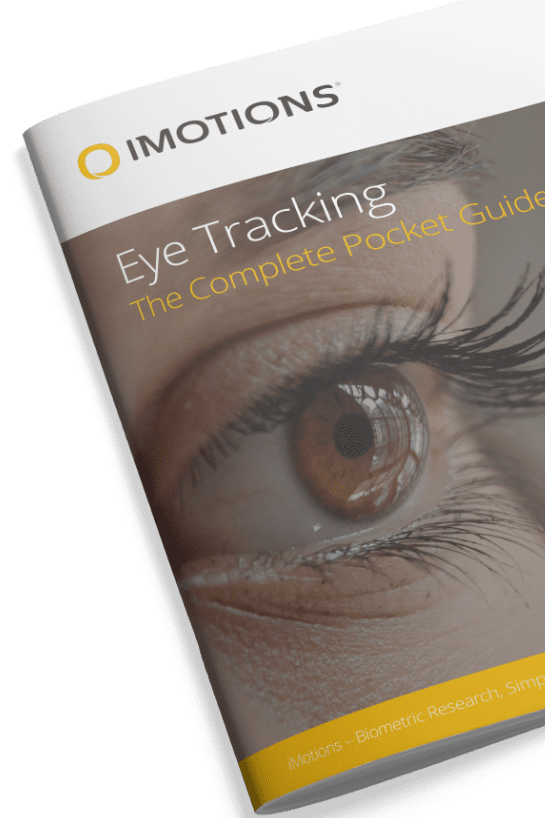In the evolving landscape of research and analysis, eye trackers have emerged as a pivotal tool, revolutionizing how we gather and interpret data on human behavior and cognitive processes. These sophisticated devices, which precisely track and record eye movements, are unlocking new dimensions in various fields, ranging from psychology and marketing to user experience and clinical studies.
This article delves into the transformative impact of eye trackers in research, exploring their applications, benefits, and the cutting-edge insights they offer. As we navigate through the intricacies of this technology, we uncover how eye trackers are reshaping the way we understand and analyze human interaction with the world around us.
Table of Contents
What are Eye Trackers and How Do They Work?
Eye trackers are devices that measure where and how a person’s eyes move. They are widely used in research, marketing, and user interface design, and they work by tracking the direction and focus of a person’s gaze.
The core technology of eye trackers involves cameras or sensors that continuously capture images of the eyes. Advanced models use infrared light, which highlights the pupils and creates distinct reflections on the cornea (the eye’s clear front surface). This method, known as the pupil-corneal reflection technique, allows the device to precisely calculate where the eyes are looking.
The device processes these images to identify specific eye movements like fixations (when eyes are steadily focused on a point) and saccades (quick movements between two points). Before use, eye trackers typically require calibration, where the user looks at set points on a screen, allowing the device to align eye movements with specific screen coordinates.
In practical applications, eye tracking offers valuable insights. For example, in usability testing, it shows how users interact with a website or an application, highlighting what catches their attention or causes confusion. In academic research, it provides data on reading patterns, attention focus, and cognitive processes. Moreover, eye tracking has significant implications in assistive technology, enabling people with motor impairments to communicate or control devices through eye movements.
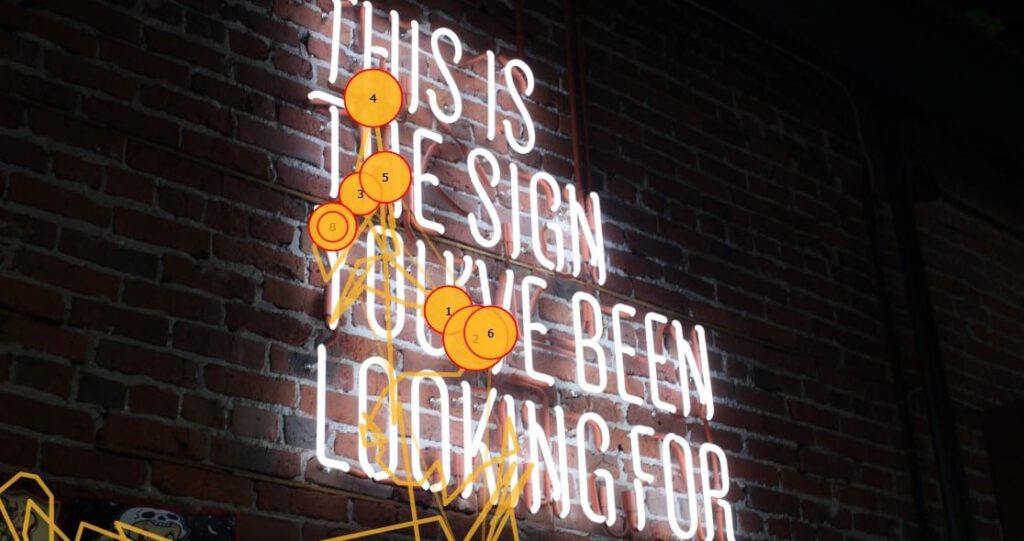
As technology advances, eye tracking is becoming more accurate and accessible, integrating into virtual reality and augmented reality systems, offering even more diverse and innovative applications.
We often get questions about the best type of eye tracker to buy from people who are starting a new study, or considering starting labs at their universities or companies. To address these questions, here is a beginners guide to choosing the right type of eye tracker for your research or use case.
Screen-Based Eye Trackers
A screen-based eye tracker is, by some distance, the most used eye tracking hardware on the market. They are mounted on either a desktop or laptop monitor with a magnetic bar, and they track wherever a person looks on that screen. A good rule of thumb is that if your research stimuli can be presented visually on a screen, and it does not lose significance by it, then screen-based eye tracking is the way to go.
A screen-based eye tracker is a very dependable piece of hardware. It has high accuracy and precision, and it is the ideal tool for anyone who wants to have a high sample size in a controlled environment.
Uses:
- Research and Usability Testing: Screen-based eye trackers are commonly used in academic research, marketing studies, and website usability testing.
- Accessibility: They help individuals with physical disabilities to interact with computers using their eye movements.
- User Interface Design: Designers use them to understand how users interact with interfaces.
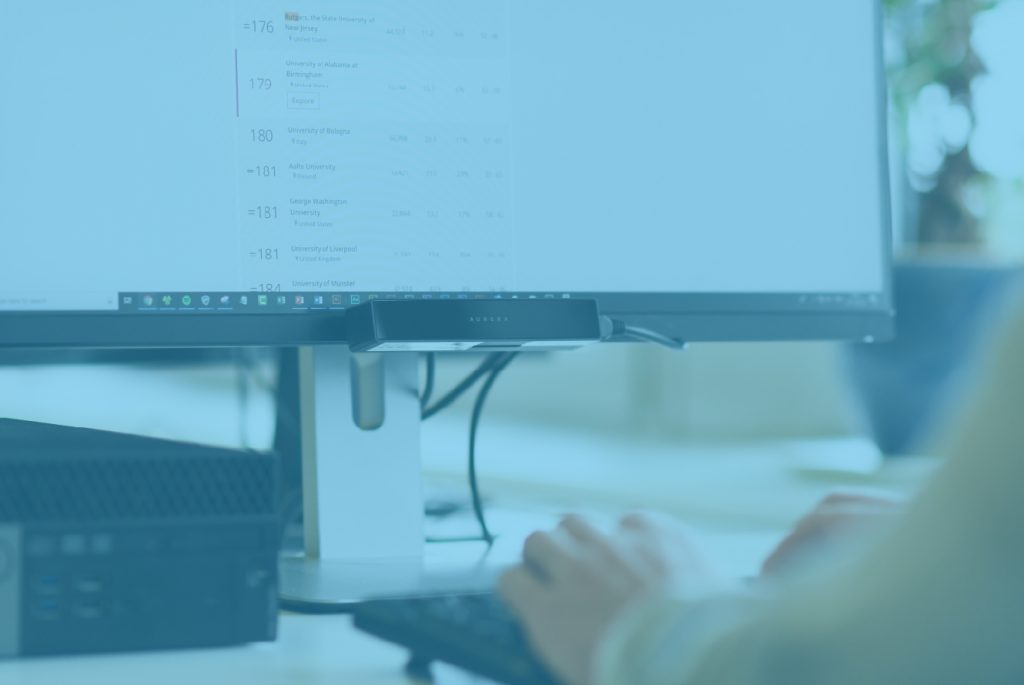
Eye Tracking Glasses
Eye tracking glasses are a very popular mobile eye tracker that essentially does what a screen-based eye tracker cannot, namely be out in “the wild”. This eye tracker is mobile, agile and is meant for in-situ research, for everything that cannot be brought to the office.
Opposed to a screen based eye tracker, eye tracking glasses often require a “companion”, such as a dedicated mobile phone or laptop to store recordings, and data will therefore need to be post-imported into iMotions after data collection has been concluded.
- Real-World Research: Perfect for studying natural behaviors in real-world settings, like shopping behavior in stores.
- Shopper studies: Used in supermarkets and other real-world retail situations.
- Psychological Studies: To understand social interactions and cognitive processes in natural environments.

VR Eye Tracking
If screen-based and mobile eye trackers deal with everything that is tangible, then VR can deal with the rest. With VR eye tracking, respondents can inspect architecture not yet built, metaverses, computer games, medical simulations and therapy programs. It is also possible, with the use of a Unity plugin, to enable 360 degrees immersive videos and images.
It is important to remember that a VR eye tracker is very dependent on a powerful computer, otherwise the data/eye tracking might not sync, there might be lag etc – all things you’ll want to avoid.
Uses:
- Virtual Reality Research: Offers insights into user behavior in virtual environments, crucial for VR design and development.
- Gaming: Enhances gaming experiences by allowing for gaze-contingent game control and immersive interaction.
- Training Simulators: Used in professional training programs, such as pilot or medical training.
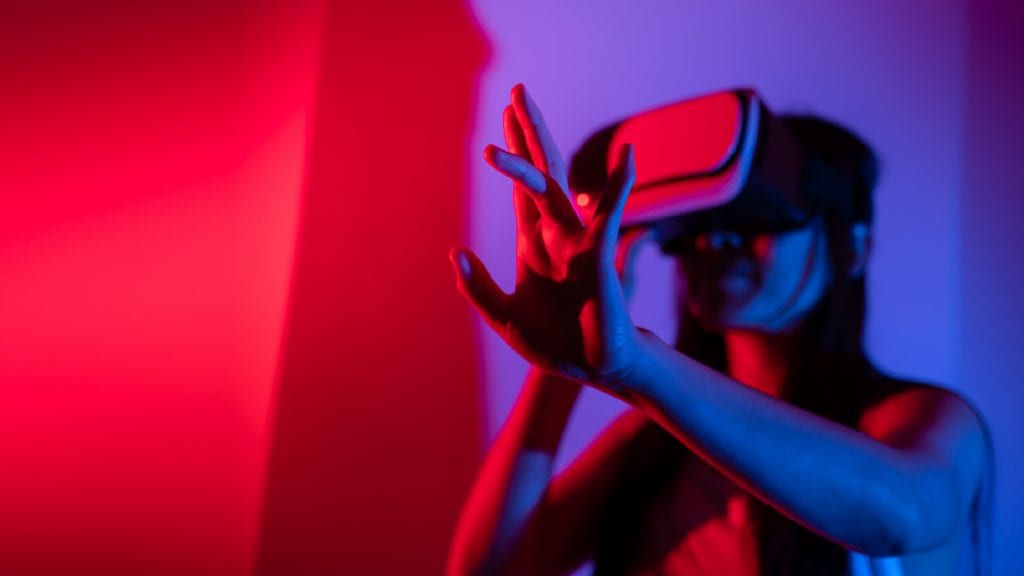
Webcam Eye Tracking – Eye tracking Online
Using a webcam as an eye tracker is the same as using a screen-based eye tracker, it is just less accurate but much much more scalable. By recruiting people’s webcams as dedicated data collection hardware makes this tech (almost) endlessly scalable. This eye tracking technology is the perfect tool for researchers looking for large respondent pools for basic studies.
Webcam eye tracking is also a fantastic tool for classroom teaching, and as an entry level tool that students can work with themselves. They can set up their own studies, send them out, and analyze the results in the time it would take to only set up a traditional lab study.
Uses:
- Basic Research and Studies: Suitable for less demanding research needs where high precision is not crucial.
- Education: Can be used for understanding student engagement in online learning.
- Consumer Testing: Offers a cost-effective solution for basic user experience and market research.
Checklist for Choosing an Eye Tracker
When selecting an eye tracker, consider the following:
- Purpose and Environment: Define what you need the eye tracker for and where it will be used.
- Accuracy and Precision: Screen-based and VR eye trackers offer higher accuracy, crucial for detailed studies. Make sure what accuracy levels are required for the study you want to do.
- Portability: If you need to conduct studies in natural settings, eye tracking glasses are ideal.
- Budget: Eye trackers are costly, but if you are looking for screen-based eye tracking, but the study is less demanding, then webcam eye trackers are more budget-friendly, but offer less precision.
Each type of eye tracker serves specific purposes and comes with its strengths and limitations. By understanding these differences, you can make an informed decision that best suits your project or research needs. Remember, the key is to align the eye tracker’s capabilities with your objectives and constraints.
Applications for Eye Trackers in Various Areas
Eye trackers in Academic Research
Eye trackers have become invaluable tools in academic research, offering unique insights across various disciplines. These devices, which precisely track where and how people focus their gaze, provide a window into cognitive processes, visual perception, and human behavior. Their applications in academic research span several fields:
Psychology and Neuroscience: Eye trackers are extensively used in psychological and neurological studies to understand how we process visual information and make decisions. Researchers study eye movement patterns to gain insights into cognitive load, attention span, memory recall, and emotional responses. This data is crucial in exploring the mechanisms behind conditions like ADHD, autism, and dyslexia.
Reading and Language Comprehension: In linguistics and education, eye tracking aids in examining reading behaviors. It helps in understanding how we process written language, revealing the nuances of word recognition, sentence comprehension, and the impact of different writing styles on readers. This research is especially significant in developing effective teaching methods for reading and language acquisition.
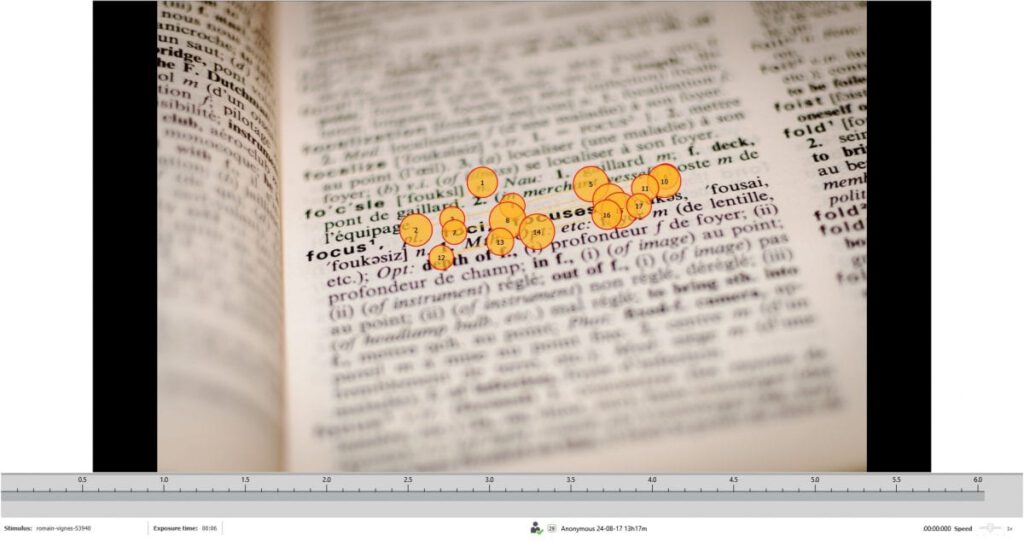
Human-Computer Interaction (HCI): Eye trackers are pivotal in evaluating user experience and interface design. They help researchers understand how users interact with digital interfaces, identifying areas that attract the most attention and those that cause confusion. This information is vital for designing more intuitive and user-friendly software and websites.
Marketing and Consumer Behavior: In the realm of marketing, eye tracking offers insights into consumer behavior. By analyzing how potential customers view advertisements, packaging, or shelf layouts, researchers can determine what captures attention and drives purchasing decisions.
Sports and Performance Training: Eye tracking is increasingly used in sports science to enhance athletic performance. By studying athletes’ visual focus during play, coaches can develop strategies to improve concentration, reaction times, and tactical decision-making.
Accessibility Research: Eye trackers are also crucial in developing assistive technologies for individuals with disabilities. They enable researchers to create more effective communication aids and interfaces that can be controlled by eye movements, greatly enhancing accessibility for those with limited mobility.
Eye trackers in Marketing and Advertising
As is the case with the broad application in academic research, eye trackers have also become a crucial tool in the field of marketing and advertising, offering unique insights into consumer behavior and engagement. By analyzing where and how consumers direct their gaze, marketers can gain a deeper understanding of what captures attention, influences decision-making, and drives purchase behavior.
Advertisement Effectiveness: Eye tracking helps marketers evaluate how effective their advertisements are in capturing attention. By analyzing where viewers look, how long they focus on certain elements, and what they ignore, marketers can assess the impact of visual elements like logos, images, and text. This information is invaluable for optimizing ad layouts, colors, and content to maximize engagement and recall.
Packaging Design: In retail environments, packaging plays a crucial role in attracting consumers. Eye tracking studies can reveal which aspects of packaging design (such as color, shape, or placement of text and graphics) are most effective in drawing consumer attention amidst a crowded shelf.
Website and Digital Content Optimization: Eye tracking is used to understand how consumers interact with digital content, including websites and online ads. Tracking gaze patterns helps in identifying which areas of a webpage draw the most attention and engagement, enabling marketers to strategically place key information and calls-to-action.
Consumer Research and Insights: Eye tracking provides real-time, objective data about consumer behavior that traditional surveys and interviews might not capture. This data is critical in understanding the subconscious drivers of consumer choice, helping marketers tailor their strategies more effectively.
In-Store Behavior Analysis: Eye trackers can be used in physical retail environments to study how consumers navigate stores and interact with displays. Insights from these studies assist in optimizing store layout, product placement, and signage to improve the shopping experience and increase sales.
Cross-Media Strategies: By comparing eye tracking data across different media (print, digital, outdoor), marketers can develop more integrated and effective cross-media advertising strategies.
Eye trackers in User Experience (UX) Design
In the very vision-centric world of User Experience Design (UX) eye trackers offer invaluable insights by providing objective data on how users interact with a digital product. This technology is particularly beneficial in understanding user behavior, enhancing usability, and refining the overall user experience. Here are some of the key applications of eye trackers in UX Design:
Usability Testing: Eye tracking is a powerful tool for usability testing. It helps UX designers understand how users navigate through a website or application. By analyzing where users look, which elements they ignore, and the sequence of their gaze, designers can identify usability issues and make data-driven improvements.
Understanding User Engagement: Eye tracking data reveals which areas of a screen capture the most attention and which are overlooked. This insight is crucial for optimizing the layout, ensuring that important information or calls to action are placed in high-visibility areas.
Improving Information Hierarchy: By analyzing eye movement patterns, UX designers can understand how users process information on a page. This helps in creating a more intuitive and effective information hierarchy, ensuring that users can find what they need without feeling overwhelmed or lost.
Design Optimization for Different Devices: Eye tracking can be used to test how designs perform across various devices. It ensures that the UX is consistent and effective whether the user is on a desktop, tablet, or smartphone.
A/B Testing: In A/B testing, designers compare two versions of a page to see which performs better. Eye tracking adds a layer of depth to this testing by showing not just which version is more effective, but why, by revealing how users interact with different elements.
Accessibility Improvements: Eye tracking can highlight accessibility issues, especially for users with disabilities. Insights from eye tracking can guide designers in making their products more accessible and inclusive.
Emotional Response Analysis: Some advanced eye trackers can also gauge pupil dilation, which can be an indicator of emotional response. This information helps UX designers understand the emotional impact of their designs, further refining the user experience.
Eye trackers in Clinical and Medical Applications
Eye trackers have found significant applications in the clinical and medical fields, offering innovative ways to diagnose, treat, and understand various health conditions. These applications span from neurology to psychology, enhancing patient care and research.

Neurological Disorders Diagnosis: Eye trackers are instrumental in diagnosing neurological disorders. For example, abnormal eye movements can be an early indicator of conditions like Parkinson’s disease or multiple sclerosis. By analyzing eye movement patterns, clinicians can detect these disorders earlier and monitor their progression.
Ophthalmology: In ophthalmology, eye tracking helps in assessing and treating vision-related issues. It’s used to examine how patients with various eye conditions, like glaucoma or macular degeneration, navigate their visual environment. This insight aids in tailoring treatment plans and visual aids to individual needs.
Psychiatric and Psychological Assessments: Eye tracking technology provides valuable data in understanding psychiatric conditions like schizophrenia, ADHD, and autism. By examining gaze patterns and eye movement behaviors, clinicians can gain insights into cognitive and social processing anomalies in these conditions.
Speech and Language Therapy: For patients with speech and language impairments, eye trackers assist in communication. Devices that track eye movement can enable non-verbal patients, such as those with ALS or cerebral palsy, to communicate by selecting words or phrases on a screen.
Surgical Training and Procedures: In surgery, eye tracking is used for training and evaluating surgical skills. By analyzing where surgeons look during procedures, trainers can assess focus, decision-making, and technique. Additionally, in robotic surgeries, eye tracking can be integrated to control surgical instruments, enhancing precision.
Rehabilitation: Eye tracking technology is valuable in rehabilitation programs, especially for patients recovering from strokes or traumatic brain injuries. It can be used to assess and improve patients’ visual attention and processing capabilities.
Research: In clinical research, eye tracking provides insights into the brain’s functioning and cognitive processes. This is crucial in developing new treatments and understanding the underlying mechanisms of various mental and neurological conditions.
FAQ About Eye Trackers
Are eye trackers safe?
Eye trackers are generally considered safe as they are non-invasive and typically use low-level infrared light or cameras to track eye movements. They do not emit harmful radiation and are designed to be used without physical contact, making them a safe tool for research, clinical, and commercial applications.
What is the Eye Tracker Test?
The eye tracker test involves using an eye tracking device to assess and record eye movement patterns. This test is used to evaluate visual attention, cognitive processing, and eye health. It’s non-invasive and involves following visual stimuli on a screen, allowing the tracker to analyze where and how the eyes move.
What is the most accurate eye tracker?
The most accurate eye tracker can vary based on specific needs and applications. However, high-end research-grade eye trackers, which often use advanced infrared technology and high-frequency sampling rates, are generally considered the most precise. These devices offer detailed tracking of eye movements and are used in sophisticated research and clinical settings.
Final Thoughts
Eye tracking has indeed become an indispensable tool in a myriad of fields, transcending its traditional boundaries and proving its versatility in providing profound insights into human behavior and cognitive processes. Its widespread use in research, marketing, user experience design, and clinical applications underscores its adaptability and the rich, nuanced data it can gather. This technology doesn’t just capture where a person looks; it opens a window into their mind, revealing attention patterns, decision-making processes, and emotional responses.
The diversity in eye tracking technology means that it offers something for almost every need and budget. From high-end, research-grade trackers that boast exceptional accuracy and speed, to more accessible, consumer-grade models used in market research and gaming, there’s an eye tracker for every purpose.
The decision isn’t just about choosing to use eye tracking; it’s about selecting the right tool that aligns with the specific requirements of your project or study. Whether it’s understanding consumer behavior, improving user interfaces, aiding in medical diagnoses, or enhancing educational experiences, the right type of eye tracker can elevate the quality and depth of the insights gained.
Moreover, the advancements in eye tracking technology have made it more user-friendly and accessible than ever before. Modern eye trackers are not only more accurate but also more comfortable and easier to use, with some even being integrated into everyday devices like smartphones and laptops.
The universality of eye tracking as a tool is a testament to its effectiveness in capturing detailed, actionable data across various disciplines. Its application is only limited by the question at hand, making it a dynamic and valuable asset in any field that seeks to understand and analyze human behavior and interaction.
Eye Tracking Glasses
The Complete Pocket Guide
- 35 pages of comprehensive eye tracking material
- Technical overview of hardware
- Learn how to take your research to the next level
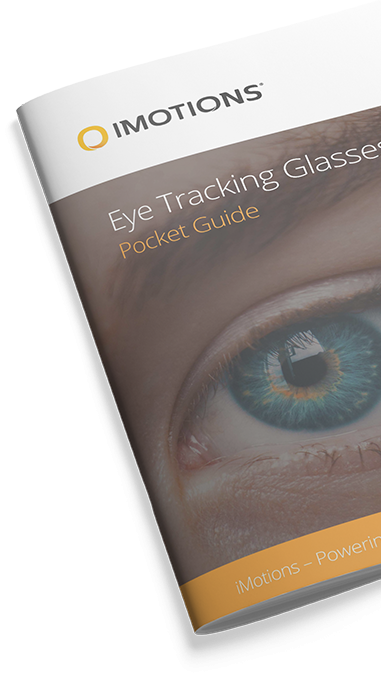
Eye Tracking
The Complete Pocket Guide
- 32 pages of comprehensive eye tracking material
- Valuable eye tracking research insights (with examples)
- Learn how to take your research to the next level
